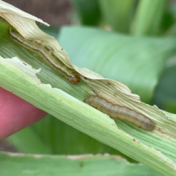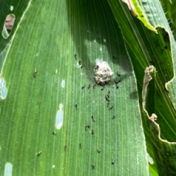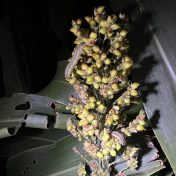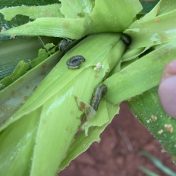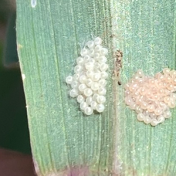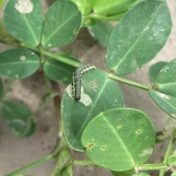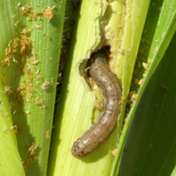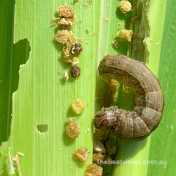Native armyworm species are currently present in many young maize and sorghum crops across southern and central Queensland. Sometimes it is just the occasional larva, but in other situations native armyworms are at higher densities than fall armyworm (FAW). As far as we know, native armyworm are far less damaging to establishing crops than FAW and are unlikely to cause… Read more »
Since 2022, an insecticide resistance surveillance program for fall armyworm (FAW) has been conducted annually by NSWDPIRD in collaboration with DAF entomologists. Resistance to older products, such as carbamates (Group 1A), organophosphates (Group 1B) and pyrethroids (Group 3A) has been confirmed in many FAW populations worldwide, and there are concerns that the increase in spraying to control FAW may lead… Read more »
Maize and sorghum crops across Queensland are experiencing extreme fall armyworm (FAW) pressure. In Central Queensland in particular, sorghum planted in the typical planting window has been heavily impacted by the very high FAW pressure. Persistent, high-density infestations pose a risk to crops from emergence through to grain fill. In an unwelcome development not observed in previous seasons, large FAW… Read more »
Late sorghum is susceptible to FAW damage, and potential yield loss, in the vegetative stage. This article discusses how the yield loss happens and how to determine if your crop is at risk. The information below was generated from both sorghum trials being undertaken at the Gatton research station funded by the Queensland Government and GRDC in collaboration with QAAFI… Read more »
If you are managing fall armyworm (FAW) in maize, you may have noticed that the permit for Affirm® (emamectin benzoate) (PER93226) had disappeared from the APVMA permits portal. PER93226 was temporarily suspended whilst clarification was sought around withholding period (WHP) and use patterns. While PER93226 is now back on the APVMA permits list, it is important to note it has… Read more »
Fall armyworm (FAW) moth catches have increased significantly in some regions over the past few weeks (see trapping counts below). It is unclear whether this increase in trap catches is indicative of migration events (perhaps associated with the recent storm activity) or increasing night temperatures that allow for greater movement of moths that may have emerged locally. Very low densities… Read more »
Since early 2020, growers and agronomists have been nervous about the prospect of fall armyworm (FAW; Spodoptera frugiperda) invading their crops. So far, the majority of significant and damaging FAW infestations have been recorded from sweet corn, maize, and sorghum crops, with some isolated outbreaks in horticultural crops such as ginger and capsicum. Occurrences in other crops have been a… Read more »
Fall armyworm (FAW) are still active across the Northern Grains Region, but inland Central and Southern Queensland have not experienced continuous population build up in crops since the first immigration of moths in September–October. One of the major contributors to this continuing low pressure is probably the very high natural enemy (beneficial) impact on FAW. A number of very common… Read more »
With the detection of fall armyworm (FAW, Spodoptera frugiperda) throughout Queensland and now in major cropping regions in NSW, growers are wondering about the best management options for protecting their summer cereal crops. The latest research from NSW DPI provides information that can assist growers in deciding the most appropriate course of action for managing outbreaks of fall armyworm if… Read more »
